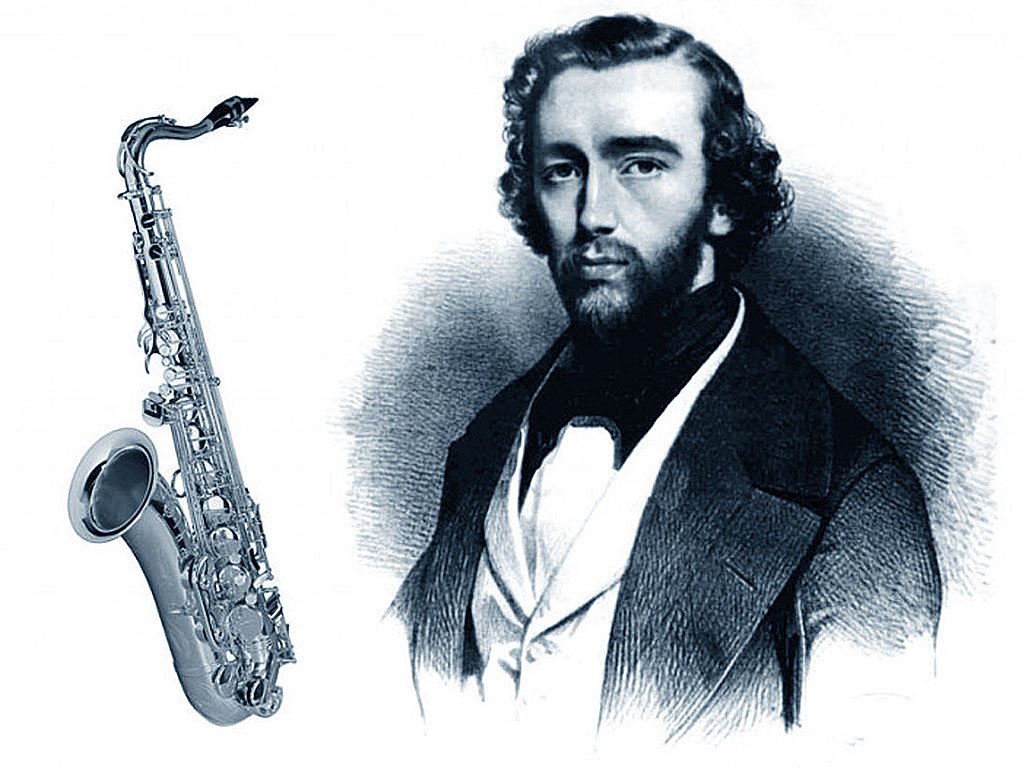On this day, 7 February 1894, the Belgian inventor of the saxophone, Adolphe Sax, died of pneumonia in Paris, afflicted by poverty.
Adolphe Sax was born in the Walloon city of Dinant on 6 November 1814. His father, Charles-Joseph Sax, was a skilled musical instrument maker who owned a family business, which greatly helped Adolphe develop his trade.
However, the story could have been very different and the saxophone very nearly never saw the light of day. During childhood, Adolphe suffered a staggering number of near-death experiences – his neighbours referred to him as "little Sax, little ghost."
As a toddler, he fell three floors hitting his head against a stone and was believed dead. At the age of three, he drank an entire bowl of acidic water. If that wasn't enough, he was seriously burned in a gunpowder explosion, while also having survived poisoning and asphyxiation – three times – due to varnished items in his bedroom. Another story has him being hit with a cobblestone and falling into a river. His mother once said that "he's a child condemned to misfortune; he won't live."
After surviving all that, Adolphe Sax started working for his father at a very young age, with his first inventions having been improvements on a bass clarinet. He exhibited his creation at the 1835 Industrial Exposition in Brussels, patenting it a few years later. In 1840, he exhibited an organ, a piano-tuning process, and a sound reflection screen.
Inventing the Sax
His historic invention – the saxophone – would finally arrive in 1841. He specified his intentions in his patent: "It is known that, in general, wind instruments are either too hard or too soft in their sound." Sax wanted to create an "instrument which sounded similar to stringed instruments, but with more strength and intensity."
In 1842 he moved to Paris – the capital of music at the time – after having been asked by Lieutenant-General De Rumigny to provide the French Army with better instruments.
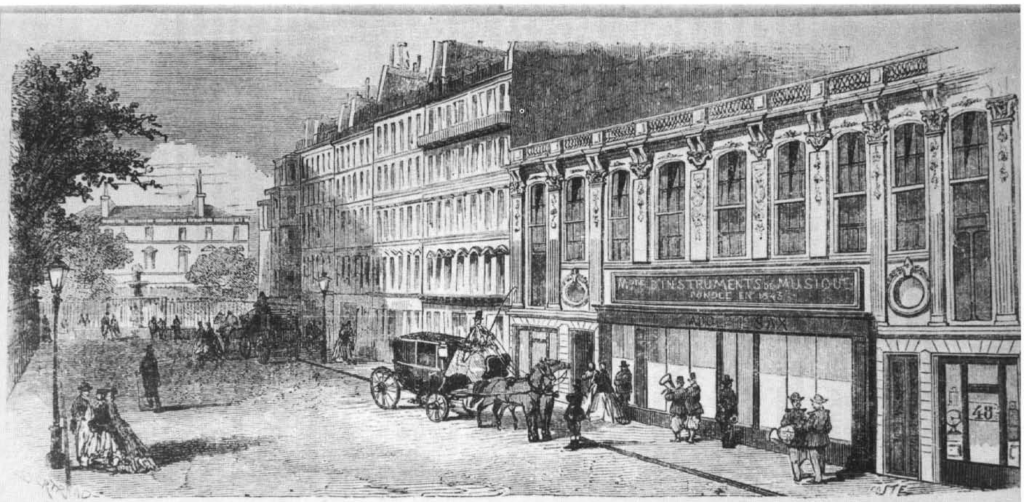
Sax's workshop in 48-50, rue Saint-Georges in Paris. Credit: Creative Commons
At the age 31 he filed a patent for the invention of the saxophone (1846), but only after he had designed and exhibited a complete series of saxophones - from soprano to baritone. His great friend Jules Demersseman, a renowned flutist and prolific composer, composed numerous pieces for saxophone. Thanks to him, this new instrument was promoted and gradually gained recognition.
With his reputation greatly enhanced, he secured a teaching post at the Paris Conservatoire in 1857.
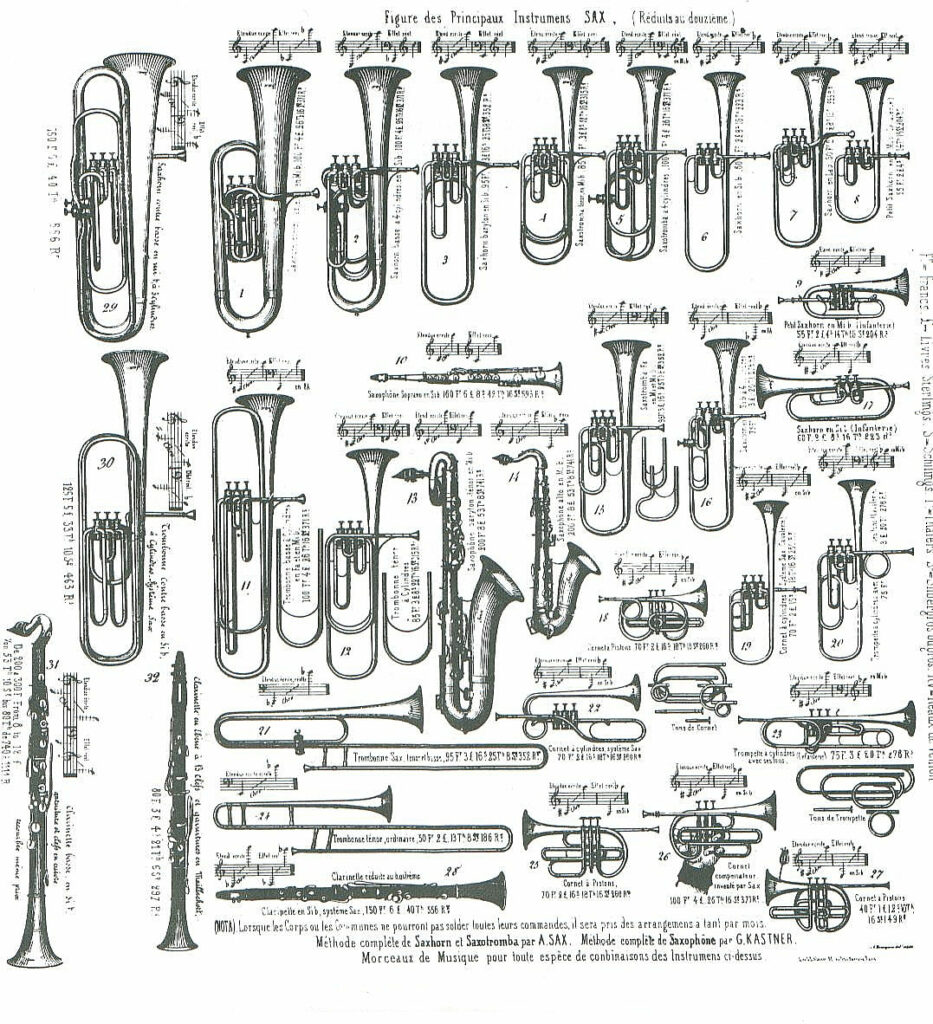
Catalogue of Adolphe Sax's instruments.
Sax also worked on a number of other types of instruments, notably saxhorns and saxotrombas. In 1877, he designed the Wagner tuba at the request of the German composer, Richard Wagner.
Despite creating a musical instrument which would later change music forever – from Paris Jazz clubs to the blues joints of New Orleans – legal troubles involving his patents affected him for over 20 years. Rival instrument makers attacked the legitimacy of his patents, with Sax suing them for patent infringement. He faced a number of bankruptcies in 1852, 1873 and 1877.
The same year he created the Wagner tube, he sold his entire instrument collection, which today is displayed at the Museum of Musical Instruments in Brussels.
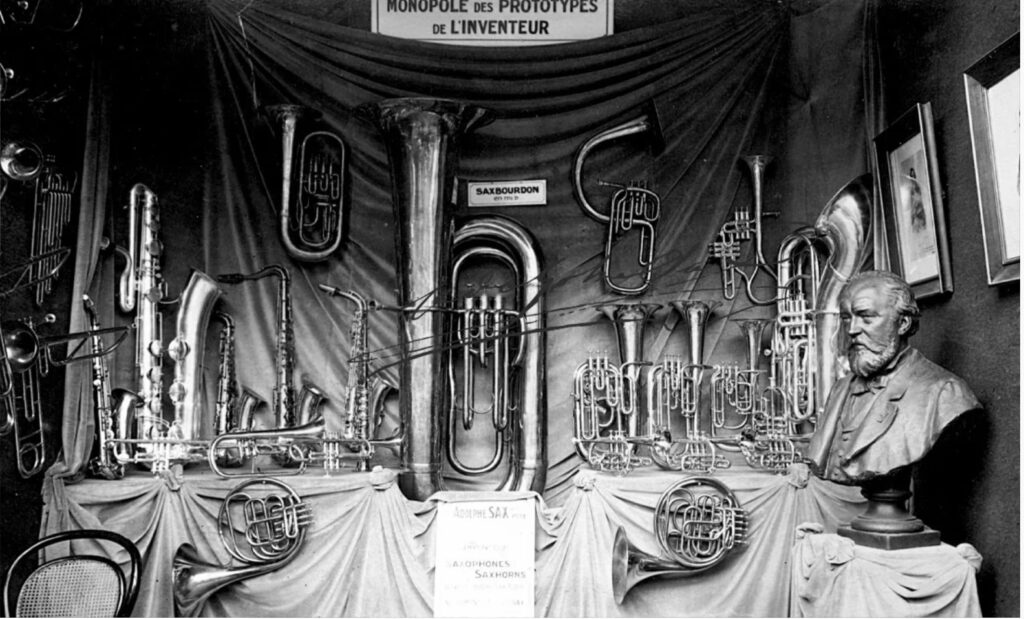
Credit: Selmer Museum Paris
When he died in Paris, aged 79, on 7 February 1894, he had achieved fame for his creations, but had not been able to escape his financial woes and fell into poverty.
Sax is buried in the Montmartre cemetery in Paris, in the Sax family vault. There are more than 6,000 symphonic works using one or more saxophones, mainly alto and tenor, but it is obviously jazz that gives the sax its global credence.
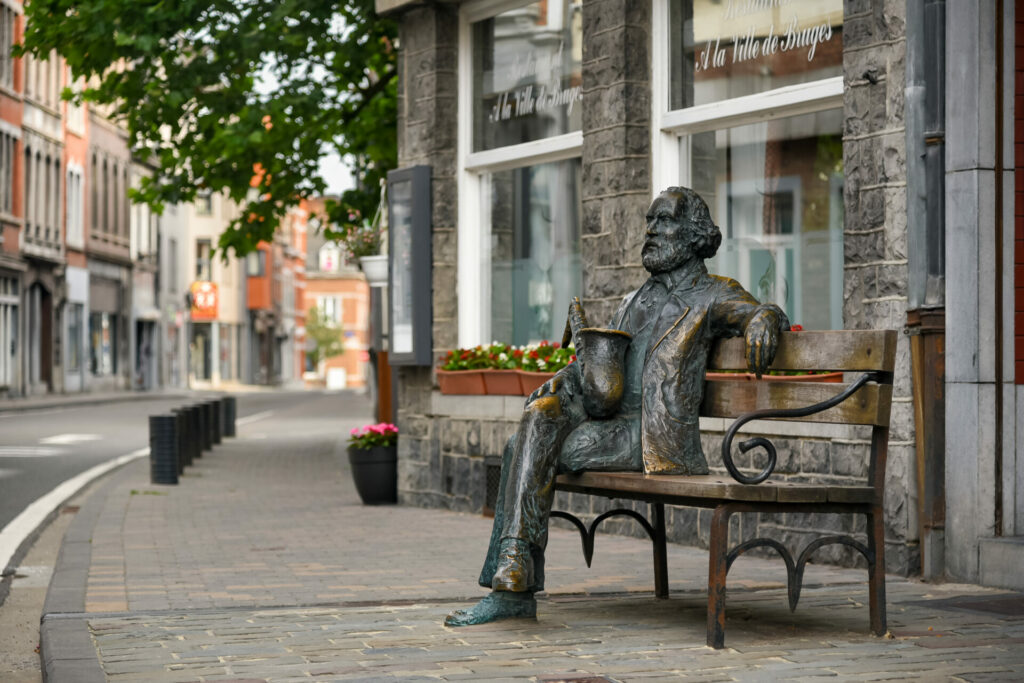
Adolphe Sax statue in Dinant, Belgium. Credit: Jorge Franganillo / Flickr
In 1994, Belgium organised the "International Adolphe Sax Year" to mark the centenary of his death, with numerous events held in honour of the Belgian inventor.
In the same year, the "Adolphe Sax International Saxophone Competition," under the patronage of King Albert II, was organised for the first time and closed the major events of the Sax Year. This competition is now held every four years.
In his hometown of Dinant, one can visit the Maison Adolphe Sax, a small museum in his honour, with city itself decorated with numerous saxophones. In Brussels, 33 instruments from Sax's private collection are kept at the Museum of Musical Instruments (MIM).
"Today in History" is a new historical series brought to you by The Brussels Times, aiming to take you on a trip down memory lane for newcomers and Belgians alike, written and compiled by Ugo Realfonzo & Maïthé Chini. With thanks to the Belga News Agency.

